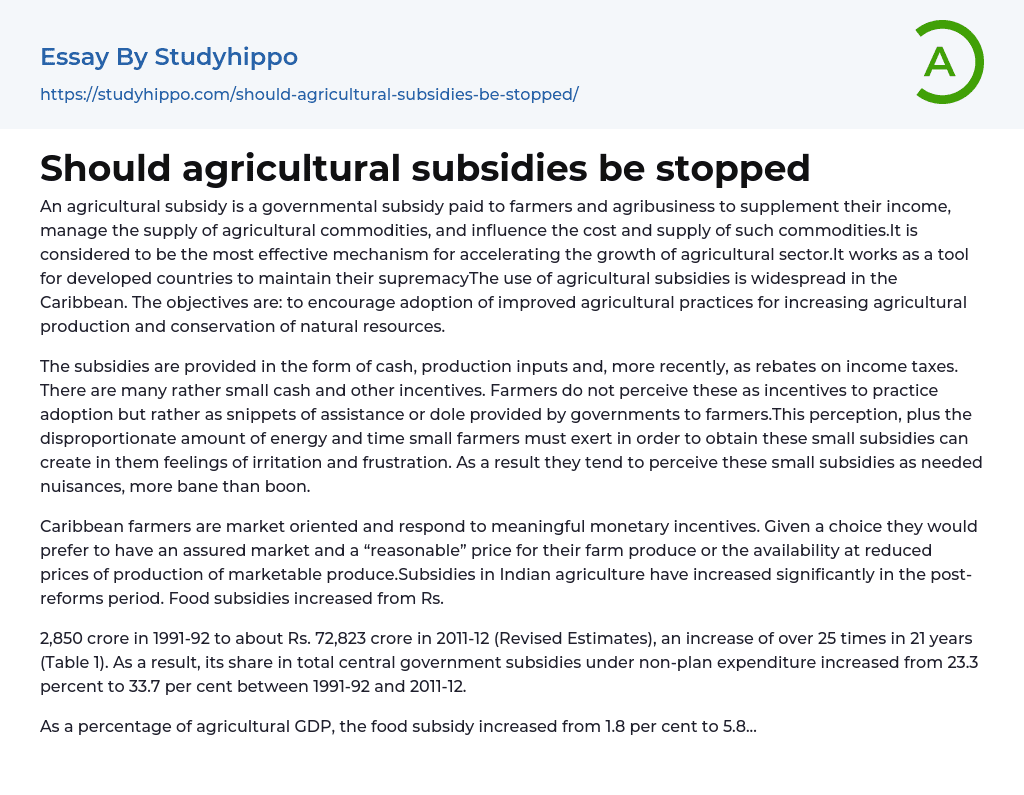Governments offer agricultural subsidies to farmers and agribusinesses for the purpose of supplementing their earnings, regulating the supply of agricultural commodities, and managing their cost and availability. This is seen as an effective means of promoting growth in the agricultural sector while enabling developed countries to maintain their leadership position in this industry. In the Caribbean region, these subsidies are utilized to motivate better farming practices that boost output and safeguard natural resources.
Government subsidies come in various forms, including cash, production inputs, and rebates on income taxes. Despite the existence of many small incentives, farmers view them as meager assistance or handouts rather than motivation to adopt certain practices. The effort expended by small farmers to obtain these small subsidies can exacerbate their frustration and annoyance with them. Consequently, small subsidies are s
...een as a necessary evil rather than a positive benefit.
Caribbean farmers are motivated by profitable markets and respond to substantial financial incentives. They prioritize a secure market and fair prices for their crops, or the ability to produce marketable goods at a lower cost. In India's agricultural sector, subsidies have grown considerably since the implementation of post-reform policies. Specifically, food subsidies have risen from Rs.
Between 1991-92 and 2011-12 (Revised Estimates), the central government subsidies for non-plan expenditure increased from Rs. 2,850 crore to around Rs. 72,823 crore. This represents a growth of over 25 times within a period of 21 years (Table 1). Consequently, its proportion in the total central government subsidies for non-plan expenditure rose from 23.3 percent to 33.7 percent during the same time frame.
The food subsidy rose from 1.8% to 5.8% as a proportion of agricultural GDP.
- Agriculture essays
- Albert einstein essays
- Animals essays
- Archaeology essays
- Bear essays
- Biology essays
- Birds essays
- Butterfly essays
- Cat essays
- Charles Darwin essays
- Chemistry essays
- Dinosaur essays
- Discovery essays
- Dolphin essays
- Elephant essays
- Eli Whitney essays
- Environmental Science essays
- Evolution essays
- Fish essays
- Genetics essays
- Horse essays
- Human Evolution essays
- Isaac Newton essays
- Journal essays
- Linguistics essays
- Lion essays
- Logic essays
- Mars essays
- Methodology essays
- Mineralogy essays
- Monkey essays
- Moon essays
- Mythology essays
- Noam Chomsky essays
- Physics essays
- Plate Tectonics essays
- Progress essays
- Reaction Rate essays
- Roman Numerals essays
- Scientific essays
- Scientific Method essays
- Scientist essays
- Seismology essays
- Space Exploration essays
- Stars essays
- Sun essays
- Thomas Edison essays
- Tiger essays
- Time Travel essays
- Universe essays




